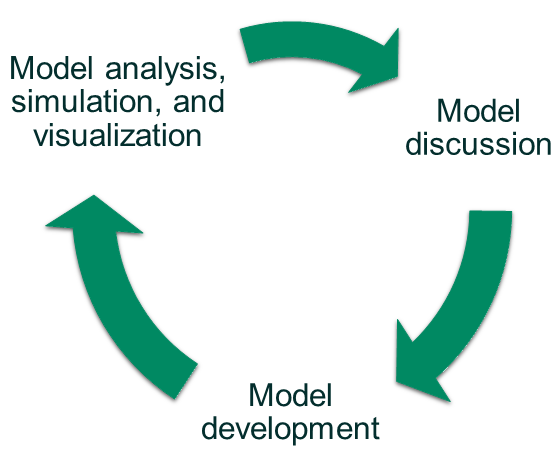Services
Inform Go/No-go Decisions
Mathematical modeling can help answer questions, such as:
- How should I prioritize therapeutic concepts into the pipeline that will meet the target product profile requirements?
- What are the possible sets of optimal parameters to support lead generation, enable clinical candidate selection, and develop a best-in-class therapeutic?
- How can I get to IND faster?
- Do I have the right data to make the best human dose predictions?
- What should the clinical strategy be, including first-in-human dose, dose escalation, and recommended Phase 2 dosing?
Applied BioMath Approach
Our collaborations are driven by four criteria which determine the mathematical strategy for your project.
Questions
The scientific questions you're trying to answer.
Data
What type of data is available (supplied by you or from the literature).
Mechanism
Known disease biology and/or drug mechanism of action.
Timeline
Timelines for modeling to support decision making and project progression.
Our Experience
We have experience working in a variety of modalities and indications across the R&D pipeline. Our scientists are experienced in working on cross-functional teams within matrixed organizations, and can translate complex technical work for a diverse audience, facilitating quantitatively driven decision-making. Our strategic support combined with our technical expertise provides for all your model-informed decision making.
Iterative Collaborations
Our models are built iteratively in close collaboration with our partners. The level of complexity is tailored for each project. At the beginning of a project, a model structure is defined based on the mechanism of action of the drug, available data, and questions the model is intending to address, as well as timeline and budget. In parallel, a strategy for how the available data will be used for model calibration, benchmarking, and validation will be defined.
Each stage of model development is intended to inform model parameters, mechanisms, and the relationship between drug dose/concentration and outcome. For example, modeling of in vitro data can inform effective binding affinity of the therapeutic to its target and how target binding relates to potency in a pharmacologically relevant assay. In vivo modeling will incorporate drug pharmacokinetics, disease-specific physiological parameters, and be used to test how well the relationship between target binding and potency determined from in vitro data translates to the in vivo setting. Through an iterative process, the final model is developed. Model simulations and analysis are then used to make predictions, test hypotheses, and identify knowledge gaps, uncertainties and variability in model parameterization or predictions.
